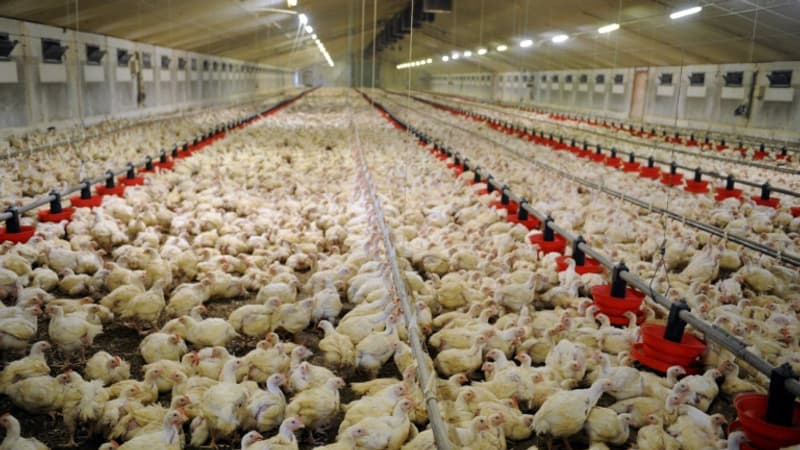Livestock production is responsible for 12% of man-made greenhouse gas emissions and its impact on the climate will worsen if nothing is done as global demand for meat rises, says a report by agricultural organization FAO. published on Friday.
To reduce the sector’s emissions, the UN agency above all recommends increasing the productivity of the entire chain, changing the animals’ diet and improving their health. He also mentions reducing meat consumption in rich countries as a way, but of limited scope. The Food and Agriculture Organization of the United Nations took 2015 as its reference year, when 810 million tons of milk, 78 million tons of eggs and 330 million tons of meat were produced, according to the document.
Meat, the largest emitter of CO2
From the production of fertilizers intended for animal feed to the doors of stores, through transportation, this caused the emission of 6.2 gigatonnes (Gt) of CO2 equivalent, measuring methane, nitrous oxide and carbon dioxide. Cattle are the main source of emissions (62%), followed by pigs (14%), chickens (9%), buffaloes (8%) and sheep and goats (7%). In terms of food products produced, meat is the main source (67%), ahead of milk (30%) and eggs (3%).
Emissions directly related to livestock farming, from cattle belching to manure fermentation, represent 60% of the total. In indirect emissions, the FAO counted the manufacture of fertilizers and pesticides for the production of fodder, the transportation and processing of animals, but also the conversion of forests into pastures or soybean fields used for fodder.
Meat consumption tends to increase with increasing wealth and urbanization, while growing concerns about climate, health and animal welfare could also slow it down, the FAO notes. But between the growth of the world population and that of average per capita demand, the consumption of animal proteins should increase by 21% between 2020 and 2050, the agency predicts.
Increase productivity
To satisfy this appetite while avoiding increasing the number of animals, several recommendations are proposed for both production and consumption. To reduce the sector’s emissions, the most effective way, according to the FAO, is to increase productivity throughout the chain, for example by using various techniques to inflate the volume of milk produced by cows or by reducing the age at which animals arrive at the slaughterhouse. .
Next comes the evolution of animal nutrition, then the improvement of their health which not only increases their productivity but also reduces the mortality rate. The selection of certain genetic traits, the provision of additives that may affect digestion or the reduction of waste are also recommended. The FAO also mentions reducing meat consumption, but stresses that its impact is limited if meat is replaced, for example, by vegetables grown in greenhouses or out-of-season fruits transported by plane.
Room for improvement
If residents followed official nutritional recommendations, this would generally lead to lower meat consumption in rich countries and therefore reduced emissions, the FAO notes. But in middle-income countries, the fall in emissions related to meat would be largely offset by the increase in emissions related to fruits, vegetables and nuts grown partly in greenhouses.
And in low-income countries, it is often recommended to increase consumption of both plant and animal proteins. Raising a cow in a feedlot in the United States tends to produce fewer emissions per animal than in sub-Saharan Africa, the FAO notes. Therefore, the room for improvement is greatest in low- and middle-income countries in Africa, South America and Asia. However, “it is not a question of promoting intensification in these regions at all costs, but rather of taking inspiration from systems with relatively lower emission intensities,” the agency emphasizes.
Source: BFM TV


